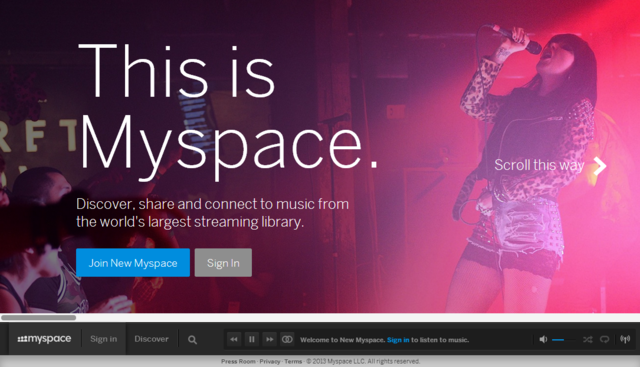Myspace might only exist as a tool used to evoke nostalgia these days, but for a few years after its August 2003 launch it enjoyed real success against the likes of Friends Reunited and an embryonic Facebook.
Indeed, at one stage Myspace even considered buying Facebook outright, but decided against the move after it deemed Mark Zuckerberg’s $75m asking price as too high.
But despite that catastrophicmisstep, Myspace is considered to be one of the key driver of Web 2.0 in the mid 2000s. It became a recognised pioneer of the social media space with a focus on entertainment, and was also much loved by celebrities (Lily Allen credited it for helping launch her career).
The Rise of Myspace
Myspace was the brainchild of a number of staff of eUniverse, an internet marketing company.
Chris DeWolfe, Brad Greenspan, Tom Anderson and Josh Berman all had Friendster (originally a social networking website) accounts, and realised the huge potential of its social networking features.
The group decided to mimic the more popular features of that website and within 10 days they had created the first version of Myspace.
It should be noted that Brad Greenspan was the eUniverse CEO and he used eUniverse resources to help create the Myspace.com website (that domain had originally started life in 2002 as an online data storage and sharing site).
Indeed, eUniverse’s 20 million users and email subscribers were used to initially populate the Myspace website, and bump it into a market leading position in the social networking industry, where it soon gained popularity among teenage and young adults.
And its popularity was gaining attention from big name media players. In 2005 eUniverse (then known as Intermix Media) was acquired by Rupert Murdoch’s media conglomerate News Corporation for a cool $580m (£443m).
This huge asking price was helped by the fact that Viacom was also actively seeking to acquire Myspace.
Yet the decision to spend over a half a billion dollars was considered a good investment at the time. News Corp viewed the purchase as a way to capitalise on Internet advertising, and drive traffic to other News Corp properties.
And within a year of the acquisition, Myspace had tripled in value from its purchase price, and from from 2005 to 2008 it was the largest social networking site in the world.
Indeed in June 2006 Myspace surpassed Google as the most visited website in the United States. That same year also saw the launch of a UK version of Myspace (and other country launches soon followed).




